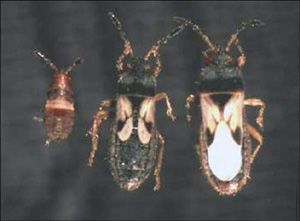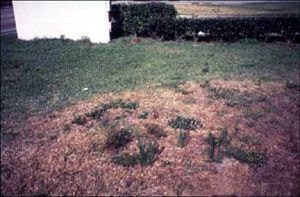Figure 1. Nymph (left), and the short-winged (center) and long-winged adult forms of the southern chinch bug, Blissus insularis Barber.
The adult form of the southern chinch bug has a black body measuring about 6 mm in length (Wilson 1929). The wings are white with a black spot on the margins of the forewings. There are two forms of B. insularis: the long-winged form, in which the wings reach almost to the end of the abdomen, and the short-winged form, in which the wings extend about half the length of the abdomen. Studies regarding the length of the adult life span differ significantly, with averages ranging from 10 to 70 days; however, the mean life span in controlled conditions seems to be around 49 days (Kerr 1966, Wilson 1929).


